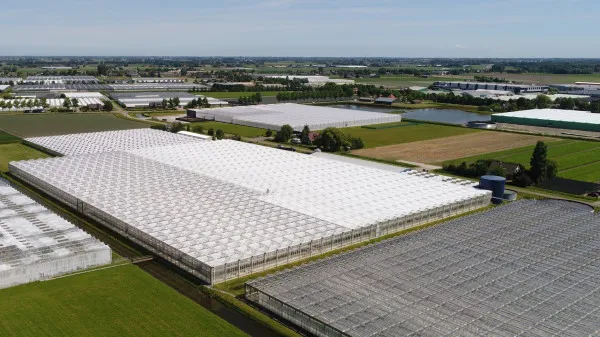The market for ornamental products has declined drastically due to the coronavirus. Many growers have questions about slowing down their crop growth in order to lower or postpone production.

This is contrary to a grower’s nature. Normally growers aim for increased production and quality, as well as an efficient crop growing cycle. But under current conditions it is important to think in reverse and approach the climate factors differently so as to delay production. This concerns light, temperature, CO2, water and fertilization.
Lower greenhouse temperature
For short-term crops, such as chrysanthemums, it is better to skip a crop cycle. For longer term crops, the key factors are lowering light and temperature levels. Temperature to a significant degree determines the crop’s speed of development. As such it is the most important instrument for postponing the production date. Currently it is still possible to make use of the low outside temperatures to reduce the greenhouse temperature. This includes minimum heating and a heat-reflective coating on the greenhouse cover.
Maintaining a balance
Of course it is important to always maintain a balance between temperature and light. A low temperature with relatively much light produces a heavy, compact, tough crop. This is because photosynthesis continues independently of the temperature level. In other words, to delay crop growth and still be left with a more or less normal crop, the level of light definitely must be reduced. This can be accomplished by switching off the artificial light and by applying a thicker coating earlier on top of the greenhouse. In addition, the CO2 dosing, irrigation and fertilization must be adjusted in accordance with the lower production level. The consequence of all this is that crop growth slows down and production output drops.
Specific coating
Mardenkro and the contractors that apply the coatings are receiving many questions about delaying production and crop growth. In the end every grower chooses his own strategy in consultation with crop consultants. For example, some growers are replacing ReduFuse with ReduFuse IR to keep heat out of the greenhouse. Growers that are already using ReduSol are applying thicker layers and are moving the application date forward. In these difficult times, your crop consultant is your best sparring partner for settling on unusual choices. Mardenkro too is always happy to assist you with expert advice.
For more information: ReduSystems
ReduSystems
+31(0)13 507 53 99
sales@redusystems.com
www.redusystems.com
